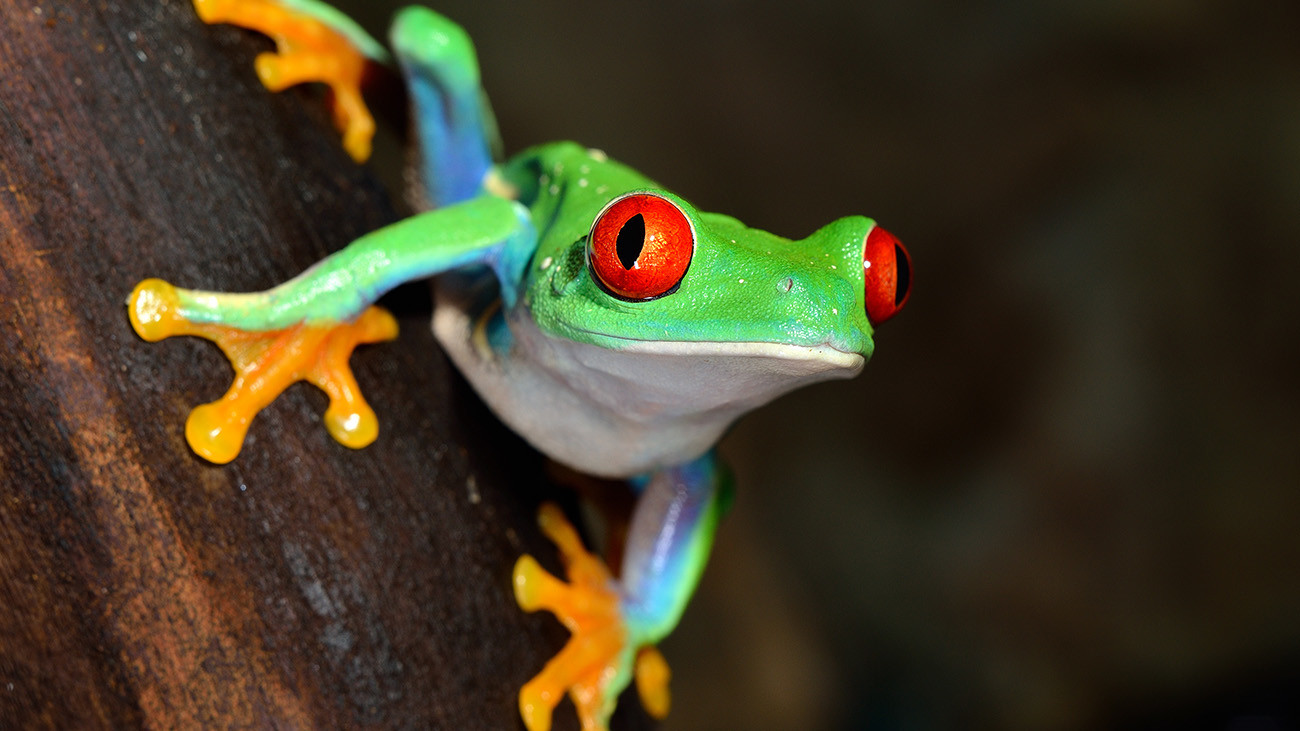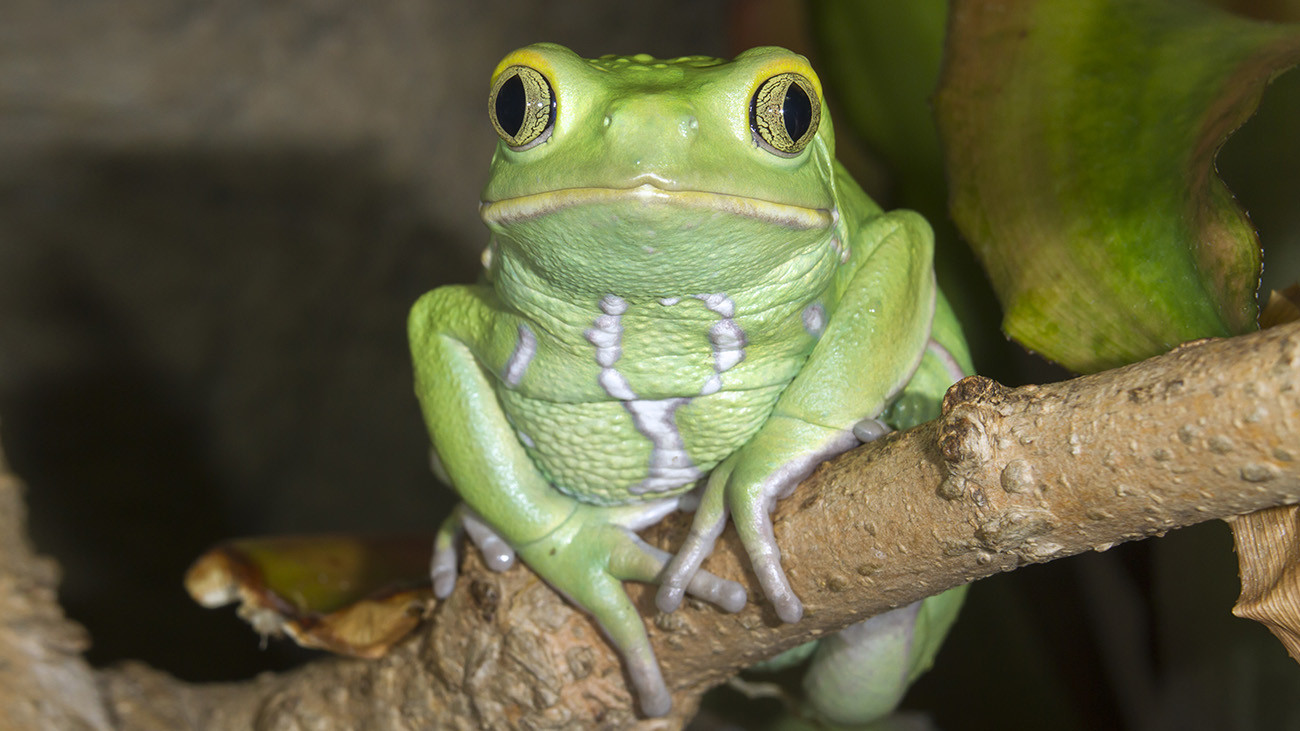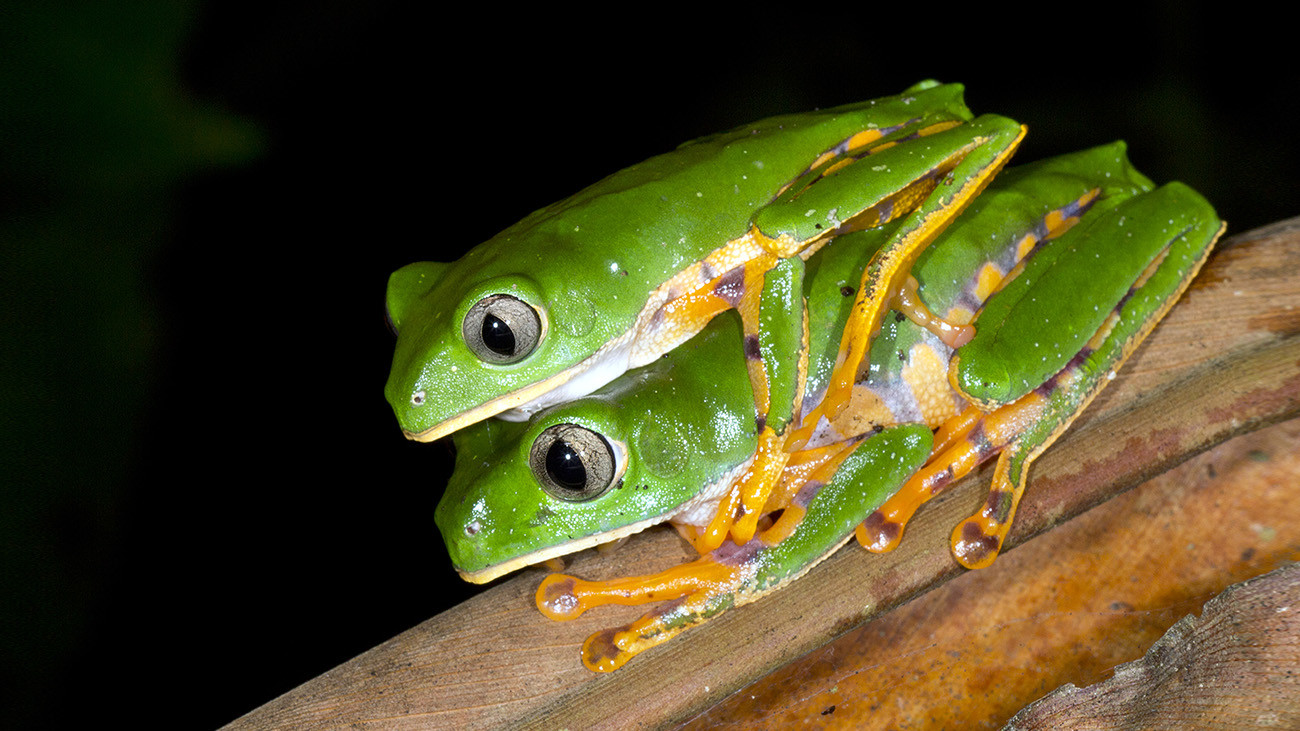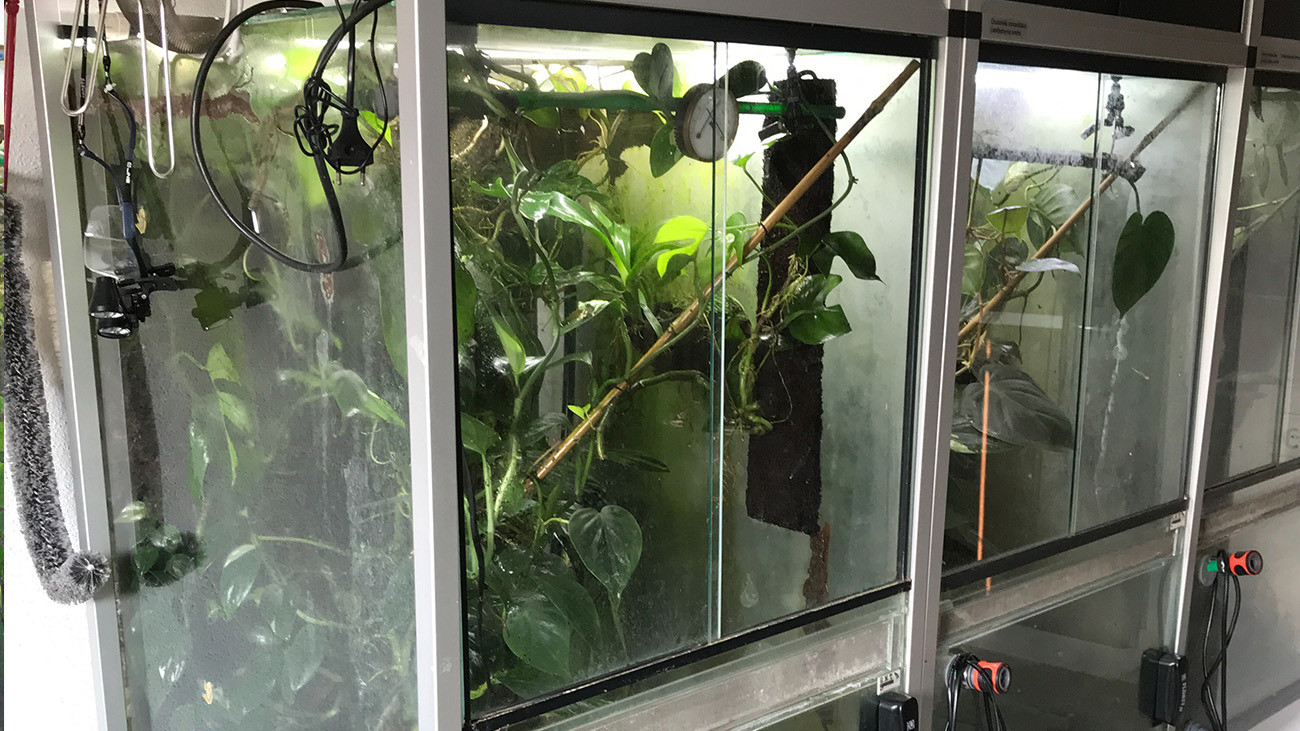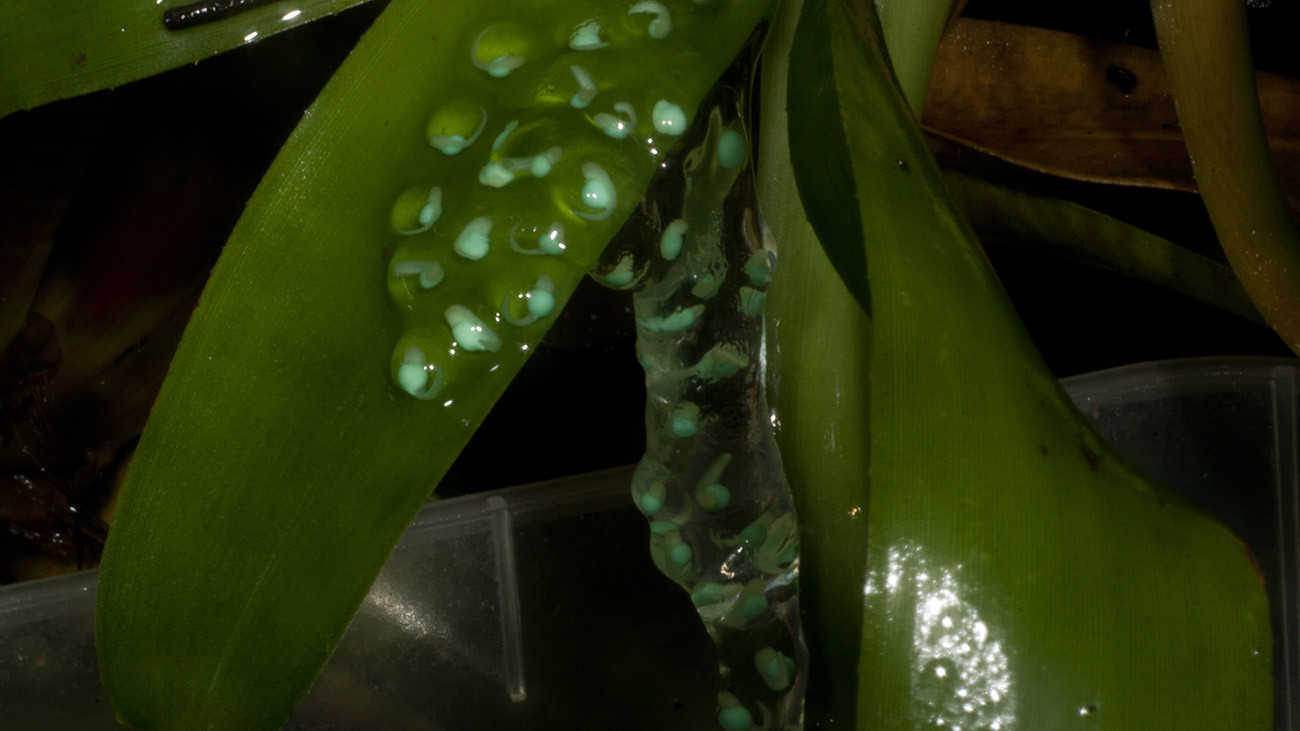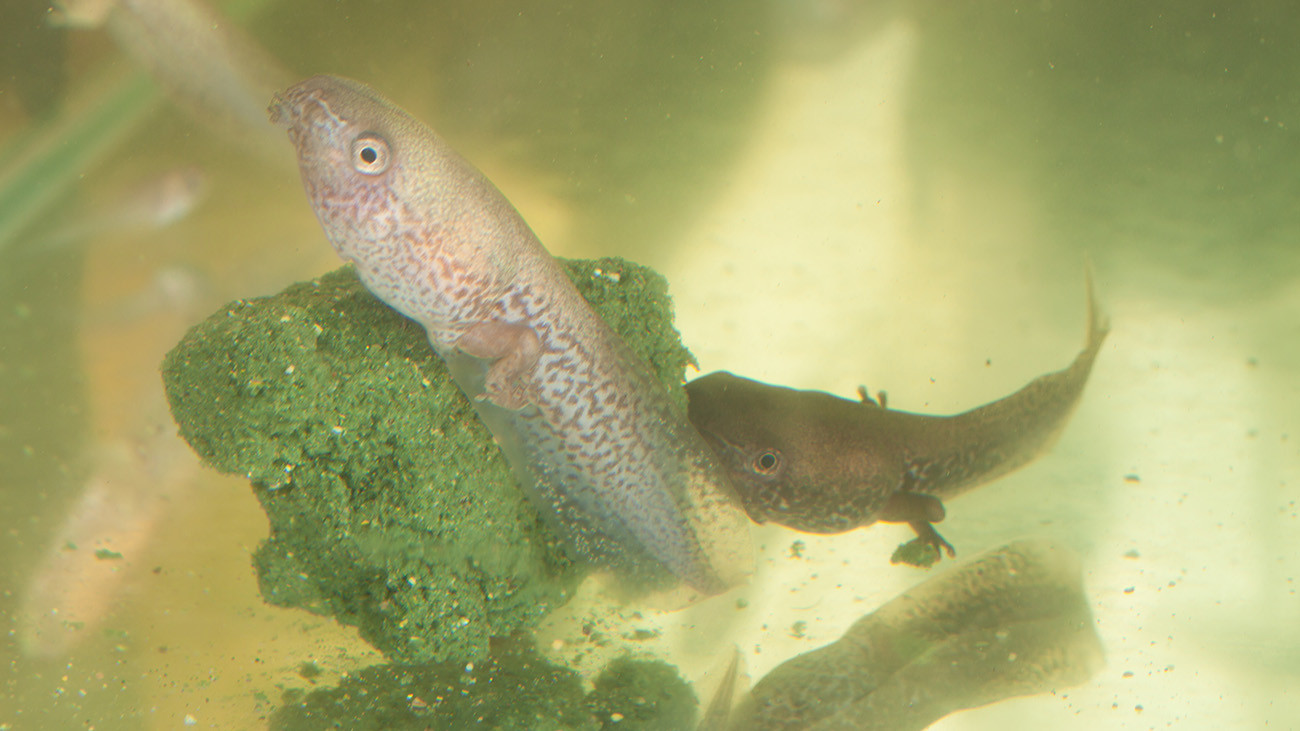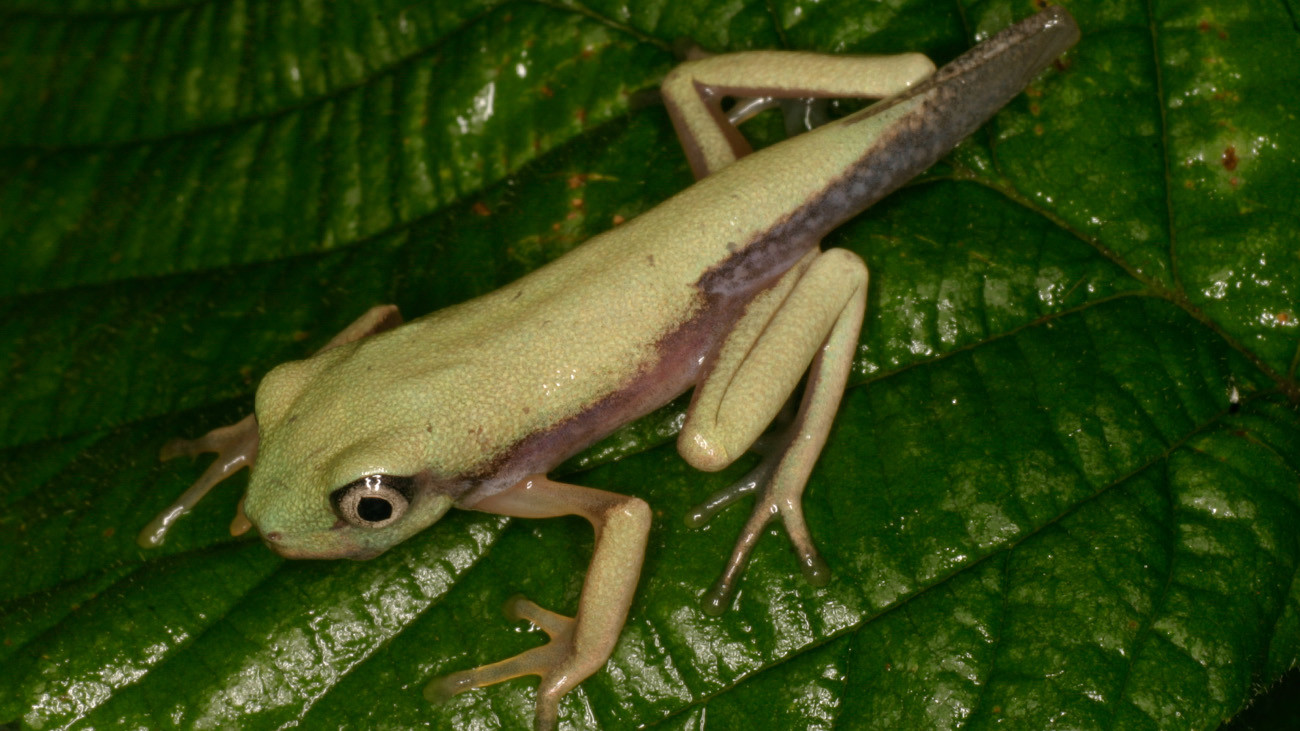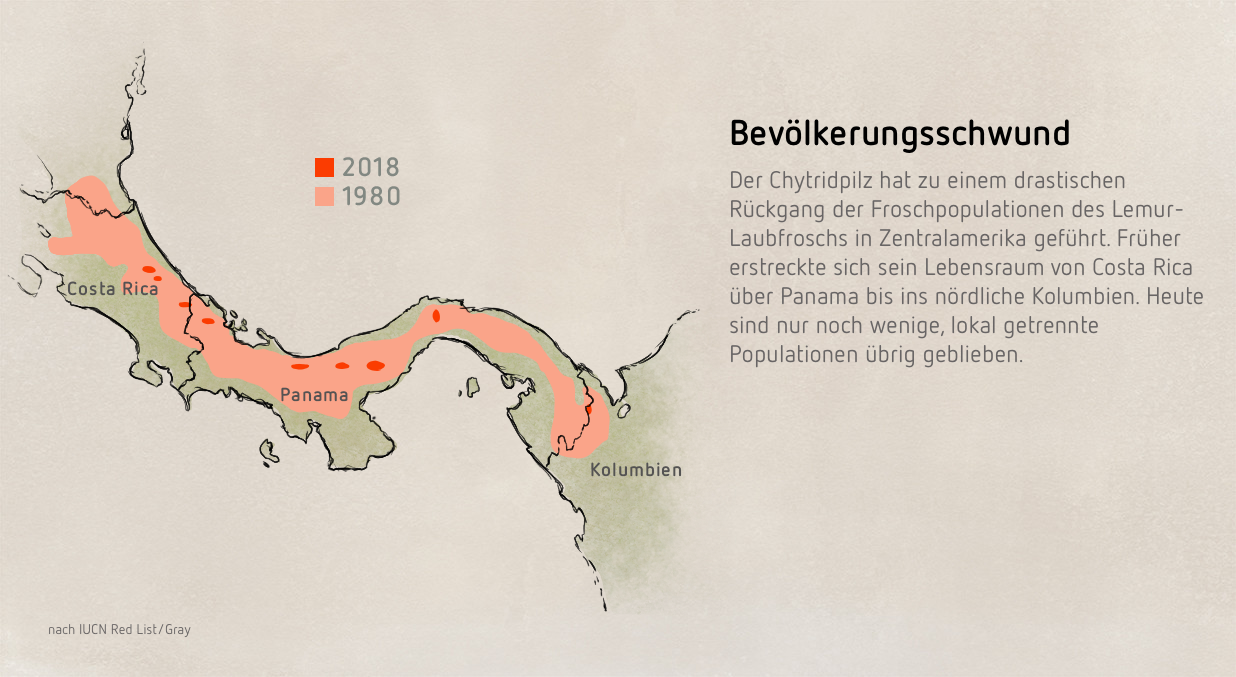Lemur-
Laubfrosch
Agalychnis lemur
Lemur-Laubfrosch
Agalychnis lemur
Zielvorgabe CC
40 Haltende
Stand 11/2025
Zielvorgabe CC
225 Tiere
Stand 11/2025
Zielvorgabe CC
40 Haltende
Stand 11/2025
Zielvorgabe CC
225 Tiere
Stand 11/2025
Keine Bodenhaftung: Der Lemur-Laubfrosch ist ein typischer Vertreter der Greiffrösche, einer hochgradig an das Leben in Bäumen angepassten Froschgruppe, die mit etwa 65 Arten im tropischen Amerika lebt. Die Tiere verbringen praktisch ihr ganzes Leben im Geäst und Blattwerk von Bäumen und Büschen. Behände schreiten sie in den luftigen Höhen umher und umfassen dabei mit ihren Händen die Ästchen, um immer sicher Halt zu finden. Wenn es dann doch mal schneller gehen muss, können sie aber auch zu einem beherzten Sprung ansetzen.
Greiffrösche
Nachtgeist im Blattgewirr
Auffällig ist der spindeldürre Körper der Lemur-Laubfrösche – zusammen mit den riesigen Augen haben sie etwas Geisterhaftes. Sehr kleine Geister allerdings: Weibchen erreichen eine Länge von 4,5 Zentimetern, Männchen schaffen nicht mal die 4-Zentimeter-Marke. Die Tiere leben in Regenwäldern mittlerer Höhenlagen von 440 bis 1.600 Metern.
Lemur-Laubfrösche sind streng nachtaktiv, die riesigen Augen mit den senkrechten Pupillen deuten es bereits an. Während ihrer Aktivitätszeit sind sie olivgrün mit rötlichem Schimmer und kleineren Flecken. Tagsüber verfärben sie sich in ein helles Apfelgrün bis Gelb, heften sich an ein farblich passendes Blatt, kauern sich zusammen, sodass ihre Gliedmaßen nicht mehr zu sehen sind, und ziehen die Augen ein. Auf diese Weise perfekt getarnt, steht einer entspannten Tagruhe nichts mehr im Weg.
Frosch-Entwicklung
Ankunft der Todeswalze
Früher waren Lemur-Laubfrösche in Costa Rica und Panama bis in den äußersten Norden von Kolumbien weit verbreitet. Dann kam der berüchtigte Chytridpilz wie eine Todeswalze über Zentralamerika gerollt und dezimierte eine Froschpopulation nach der anderen. Auch den Lemur-Laubfrosch erwischte es. Zum Glück nicht ganz. Kleine, aber nun inselartig isolierte Populationen konnten dem Pilz widerstehen. Offenbar haben die Tiere dort „gelernt“, mit dem Erreger zu leben. Für Wissenschaftler ist das ein hoch spannender Mechanismus, der bislang noch nicht richtig verstanden ist.
Auch den Lemur-Laubfrosch erwischte die Todeswalze. Doch zum Glück nicht ganz
Lemur-Laubfrosch © Tobias Eisenberg
Hoffnung durch Haltung
Trotzdem ist das Fortbestehen der Art alles andere als gesichert. Denn auch der Mensch setzt den Fröschen zu. Die Wälder, in denen die Restbestände noch leben, geraten durch Abholzung unter Druck. Und unglücklicherweise mag der Lemur-Laubfrosch anders als manche seiner näheren Verwandten gar keine Störung – in vom Menschen stark veränderten Wäldern oder gar in Kulturlandschaften kommt er nicht vor. Immerhin: Zoos und Privathalter züchten die Art schon seit einigen Jahren erfolgreich. Citizen Conservation will helfen, diese Terrarienpopulation fest zu etablieren und ihre genetische Vielfalt zu erhalten. Auf dass dieser einzigartige Frosch nicht wirklich in Kürze nur noch ein Gespenst sein wird.
Für Halter
Basisinformationen zu Biologie und Haltung
Für erfahrenere Halter. Terrarium für eine Zuchtgruppe von 50 x 50 x 60–100 cm (Länge x Breite x Höhe). Auf Bodengrund verzichtet man, dafür kommen großzügig Pflanzen und Äste hinein. Fütterung mit Insekten. Temperaturen von 24–26 °C tags und 18–20 °C nachts. Stimulation der Fortpflanzung durch intensive Beregnung nach kühlerer Haltung. Aufzucht der Fischfutter fressenden Kaulquappen im Aquarium.




